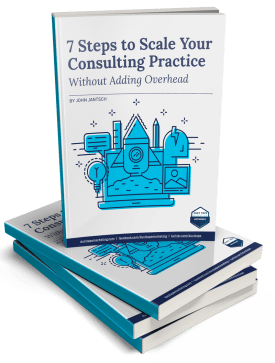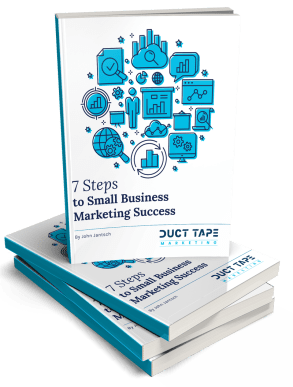
I’ve been writing about the use of story in marketing for years. I remember when I first started telling people over a decade ago to make their clients the hero of their stories and to use their personal stories as foundational marketing elements they were dubious at best.
Today, every marketer understands the value of story as a way to sell just about anything. But, still, few understand the right way to use story and narrative as a way to guide people on the perfect journey.
This is due in large part to the fact that it takes some skill, a bit of hard work and perhaps, more importantly, patience. A great story has many significant elements and to have the greatest impact each element must be built in a certain order – much like the foundation of a house must be laid before the walls and roof have a place to stand.
The good news is that I believe there’s a framework that any business can adopt and that framework is evident in just about every great story told throughout time.
Any screenwriter making a living today uses this same framework to draw us in and take us along with them on a journey.
After you read this post, you’ll also have the tools to build this same framework for your business and use it as the basis for just about every marketing decision you make.
Your core story and the narrative technique described below will work to help cement your brand in the mind of your ideal client, but it is equally effective as a framework for a product launch or email autoresponder campaign.
The framework relies on the three key elements: The ideal client persona, the core story and the journey goal map (based on the Marketing Hourglass.)
The ideal client persona
The term persona is borrowed from the theater. An actor may receive a script, and the persona is the description of the character played by the part. If an actor is to understand the character they must know a little about what drives them, what they believe, what they fear, and what they desire.
Audience Audit, Inc did research on small business personas for Infusionsoft and created some great examples of how you might describe a segment of your marketing.
They give the segment a name and then describe them with a handful of core words as well as some background on what they believe.
“Passionate creators – Creativity, optimism, service
This segment believes that passion is one of the most important qualities of a small business owner. They are proud of the job-creation engine that small businesses represent, and value having the ability to serve a customer well.
Passionate Creators are interested in creating something unique, making a difference in the world, and driving economic growth. They are dramatically more optimistic than other segments, and the most likely to report that small business ownership has contributed to improvements in their overall attitude, time availability and financial security (versus if they had a corporate job).”
You can read the entire small business market survey here
Another resource I often point to when discussing the topic of personas is Adele Revella’s Buyer Persona Institute. http://www.buyerpersona.com/ Revella is a past guest on the Duct Tape Marketing podcast – you can listen to that episode here. https://ducttapemarketing.com/blog/customer-personas/
How to craft the right story
As stated above, there are elements that make a story both a good story and the right story. For most businesses this isn’t about telling some riveting tale that makes for good entertainment, it’s about demonstrating you are the right person to help the reader achieve what they want to achieve.
Make them the hero
First and foremost, if you intend to create a story that your prospects care about you must position them as the hero of the story. Most businesses go on and on about how great their business, product or service is, and frankly, that’s the last thing a customer cares about.
Think about every great story you’ve read, you love the story because you connect with the story’s main character. For your story, the main character must be your ideal customer persona and not your business.
Your customer or prospect has problems, and it’s your job to guide them on a journey to solve that problem and achieve their ultimate destiny.
I know that may sound a bit dramatic, but doesn’t that sound a lot nobler than just selling them stuff?
I work with small business owners, and I can tell you that no one wants the world’s greatest marketing consulting – the hero of our story wants freedom, control, growth, and creativity and it’s our job to guide them down the path to leads to just that.
Help them understand their problem
One of the first tasks is to help the hero understand the real problem they face as it’s often not what they think it is.
Now, sometimes this can pose a real challenge as selling a solution to a problem people don’t even know they have is a tough path to trod.
The real key lies in the persona. So often what people want in life can be achieved once they let go of many of the symptoms of what’s holding them back.
Often we have to show prospects what letting go and refocusing on what matters looks like before they start to see that as the answer.
Our story must both reveal the real enemy and prove that we know who and what it is. You build a great deal of trust through empathy.
In our case, the real enemy is time, focus and fear. When we address these elements, we can start to reveal what a solution could look like in the context of the real problem.
Reveal the authority to guide them
Of course, once your story connects with their real problem you must be able to reveal you and your business as the one who can guide them to where they want to go.
Every great hero meets a mentor or guide along the journey that gives them the knowledge, tools and confidence to take up the journey.
Think
- Obi-Wan Kenobi and Luke Skywalker’s lightsaber
- Gandalf and Mithril armor
- Dumbledore and Harry Potter’s wand
Admit it, the idea of playing the role of Obi-Wan for your prospects has to be a lot more fun that just being the head of marketing.
Paint a better picture
One of the keys to moving your prospects down the path is to inspire them by painting a picture of what it could look like if they had the real problem handled.
A vivid picture of what a small business owner’s day could look like if they installed a marketing system – right down to how they would feel on that day is a great way to lead your prospects to make a change.
Challenge them to succeed
Finally, you must be able to challenge them to take action. This part of the story might be referred to by marketers as the call to action, but for it to be powerful, you must also help them understand the cost of not taking action.
Generally, people are more motivated by what they might lose than what they might gain and when you can help them see the true cost of not acting as well as the value of succeeding when they do act, you can start to position what you do as an investment rather than a cost.
Marketing is almost always seen as a cost – when it’s seen as an investment the dynamic of the sales conversation changes dramatically.
How to craft the right journey
Once you understand the hero of your story and the challenge you can help them solve you have to move to understanding the journey itself.
As a prospect searches for solutions to questions, problems and challenges known and yet unidentified you have to use your marketing to address the questions and goals they are bound to have during each stage of the journey.
You must get involved in their journey as early as possible, and you can only do this by addressing them where they are. If you simply jump to promoting what you sell before they’ve even concluded that you address their challenges, you’ll be forced to hard sell.
But, if you wait until they’ve concluded on their own that your category of solution is that answer to their prayers, you’ll be forced to compete against everyone else who says they do what you do.
When you understand the goals and questions your prospects are facing during each phase of their buying journey you can create content and campaigns aimed at these specific desires.
For example, here’s what the journey goals for a small business looking to grow more profit by working with a tax advisor might look like.
- Know – To learn the best, most profitable ways to run and grow their business
- Like – To better understand what other people are doing to lower expenses
- Trust – To understand what’s possible and legal
- Try – To see if any of the proposed savings apply to their situation
- Buy – To experience a process that feels very professional and give hope of substantial savings
- Repeat – Understand other ways they can gain wealth and possibly set up business to sell
- Refer – To feel proud telling another business owner about a very smart decision they made
As you can plainly see the idea of cutting taxes doesn’t even appear until about midway through this journey. The consultant selling tax consulting, however, must look to become the guide first by building trust teaching ways to run and grow a business.
Understand your customers, make your prospects the hero of your marketing story and then guide them to success. That’s how you build a business that both succeeds and matters.
If you’re an overachiever I also suggest that you read the following:
- Save the Cat – Blake Snyder (Storytelling from a screenwriting perspective)
- The Hero with a Thousand Faces – Joseph Campbell (The classic academic tomb that reveals why we like Star Wars so much)
- The Writer’s Journey – Christopher Vogler (A very practical text for understanding the role of mythology in story)
- resonate – Nancy Duarte (A presentation framework based on the hero’s journey)
- Storytelling with Data – Cole Nussbaumer Knaflic (Sometimes you must use numbers to tell a story! – Edward Tufte for the Internet age)



